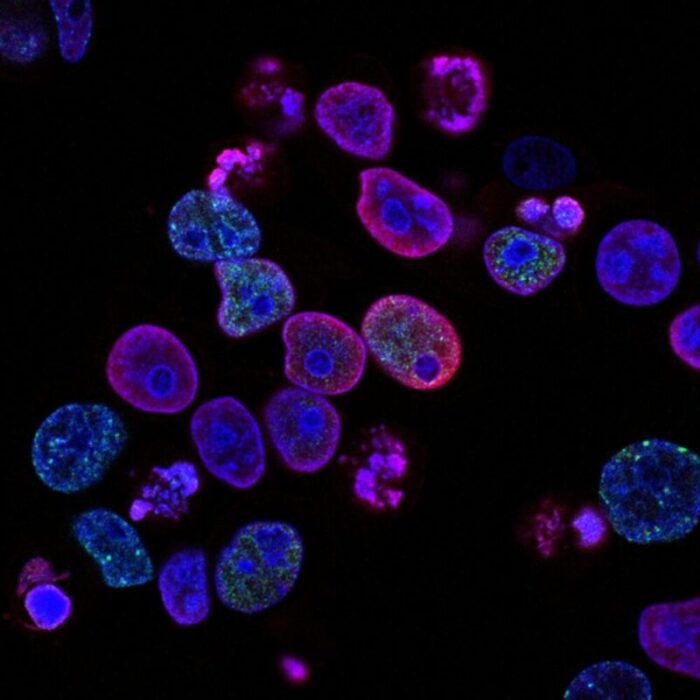Life sciences real estate – state of the market Q4’20
Given the current pandemic situation the interest of the real estate investment community in the life sciences real estate sector is poised to grow tremendously in the years to come. Technically, this is office real estate but because of the pandemics it is becoming a hot sector. Major life sciences markets around the country report non-existent vacancy rates. This employment, space, investment demand is driven by significant capital flows into the life science sectors from industry investors and tenants (established bio-pharmaceutical, biotechnology, venture capitalists, and other seed investors).
Several conclusions in the research point to the positive trend in the life sciences real estate:
> Venture capital funding in biotech is up significantly from $4 billion on a rolling 4 quarter basis in 2013 to a record $17.8 billion in Q2 2020;
> The pandemic is driving significant demand for life science space from the funding of new and legacy biotechnology companies;
> Innovations in life science, capital flows and employment will drive the repositioning and redevelopment of existing commercial space;
> One of the main drivers of demand for life science space is life science employment.
San Francisco Bay Area Life Science
The development and advances in life science over the past 20 years is changing the supply demand dynamics for space due to the rapid development of new drugs and diagnostics on a global basis. The San Francisco Bay Area (UC Berkeley/I-880, San Francisco Mission Bay/UCSF, South San Francisco/I-101, Palo Alto/Stanford University) is one of the top life science clusters and markets in the U.S.
According to the Center for Disease Control (CDC), just in the United States as of December 2020, there are over 16.5 million infections and 300,000 deaths from COVID-19, with no vaccines or drug treatments anticipated until late 2020 and early 2021 (Johnson & Johnson, Pfizer-BioNTech, Fosun Pharma, Janssen, and Moderna).
As reported by Cushman & Wakefield (Q32020), the pandemic is driving significant demand for life science space from the funding of new and legacy biotechnology companies (genomics, cell and gene therapy, gene editing), as they fight the disease (other diseases) with the development of new testing, vaccinations, and potential treatments.
CB Richard Ellis (CBRE) Research and PWC Moneytree (Q32020) reported, venture capital funding is up significantly from $4 billion on a rolling 4 quarter basis in 2013 to a record $17.8 billion in Q2 2020, with San Francisco Bay Area ($5 billion) and Boston-Cambridge ($4.8 billion) accounting for 50% of the total amount raised. Newmark Knight Frank (June 2020), also noted that the S&P Life Science stock market index rose from 400 in 2010 to 1,000 in 2020, up 150% or up 9.6% per year.
Innovations in life science, capital flows and employment to drive the repositioning and redevelopment of existing commercial space. This supply is driven by high rates of gross and net absorption, causing vacancy rates to fall to frictional levels, and rents and values to spike and remain elevated through (well above construction costs) to 2025.
Life Science Employment Trends
One of the main drivers of demand for life science space is life science employment. As noted by CBRE research (Q32020) and the U.S. Bureau of Labor Statistics, metro areas with the largest life science employment are: San Francisco Bay Area (120,000), Boston/Cambridge (100,000), New Jersey (70,000), Washington, D.C./Maryland (65,000), San Diego (60,000), Chicago (59,000), New York City (50,000), Philadelphia (49,000), Los Angeles (45,000), Minneapolis (45,000), and Orange County (39,000).
Also, according to Cushman & Wakefield (Q32020), the cities with the highest life science employment growth are: San Francisco Bay Area (15,000), Boston/Cambridge (12,000), San Diego (8,000), New Jersey (6,000), Seattle (3,000), and Raleigh/Durham (2,000).
As stated in the Bureau Labor of Statistics and Jones Lang Lasalle (JLL), Bay Area STEM employment growth is outpacing the U.S., accounting for 10.4% of the U.S. since 2013. Silicon Valley STEM employment to exceed 250,000, and San Francisco to exceed 300,000, by 2026; both converging at a cumulative growth rate of 24% by 2028.
Large clusters of life science employment are reflected in metro areas with the largest inventories and amount of new construction.
Life Science Marketplace
Across the United States, life science market places are located primarily in the San Francisco Bay Area (San Francisco, South San Francisco, Stanford University, Berkeley/UC Berkeley), Boston/Cambridge, Suburban Maryland, Manhattan/New Jersey, Seattle/Puget Sound, San Diego and Chicago.
As noted by CBRE Research (Q32020), markets with the most life science laboratory new construction are: Boston Cambridge (4.5 msf), San Francisco Bay Area (4.2 msf), San Diego (1.5 msf), New York CIty (1.2 msf), Denver/Boulder (1.0 msf), and Raleigh-Durham (1.0 msf).
Reported by JLL (2019), much of the Research & Development (R&D) space in the SF Bay Area and San Francisco alone, have become highly impacted with pharmaceutical and biotech companies; around 200 companies have started within the Bay Area. Just within the city limits of San Francisco, there is the potential for developing 26 million square feet of R&D space.
The top ranked U.S. life science markets are not only reflected in the size of inventory, but also low vacancy rates, high rental rates, and high sales volumes (price per square foot).
Life Science Market Research
According to Jones Lang Lasalle (2020) and CBRE research (Q32020), the top-ranked U.S. life science clusters are Boston (89 score), San Francisco Bay Area (73), San Diego (57), Washington, D.C./Maryland (52), Raleigh-Durham (49), Philadelphia (49), New York/New Jersey (44), Los Angeles (43), and Seattle (33); along with Los Angeles/Orange County, Chicago, and Denver/Boulder. Emerging clusters include Pittsburgh, Houston, Austin, Detroit, Phoenix, Dallas/Ft. Worth, St. Louis, Atlanta, Portland, and Minneapolis.
Cushman & Wakefield’s (Q32020) recent report indicates U.S. life science vacancy rates are low at 7.1%, compared to 12.4% for office space. Markets with the lowest vacancy rates are: Boston (1%), Chicago (1.5%), Suburban Maryland (4%), Seattle/Puget Sound (5%), Philadelphia (5.5%), San Francisco Bay Area/Peninsula (7%), and San Diego (7%); and markets with the highest asking rents per square foot are: Boston ($110), San Francisco Bay Area/Peninsula ($90), Manhattan ($75), Oakland/East Bay ($60), San Diego ($50), Suburban Maryland ($40), and Seattle/Puget Sound ($40).
CBRE Research (3Q2020) and Real Capital Analytics (RCA) reports year ending 2Q 2020 lab/R&D sales volumes totaled $9.6 billion, from $2 billion in 2Q 2010, with 66% of the transactions occurring in the San Francisco Bay Area, Boston-Cambridge, and San Diego markets.
One of the top life science markets for investment in the country is the San Francisco Bay Area, as reflected in massive venture capital flows, positive absorption, low vacancy rates, high rental rates, and sales price per square foot.
San Francisco / Bay Area
The San Francisco Bay Area is one of the leading life science markets in the United States, and on a global basis, particularly San Francisco, South San Francisco, Berkeley and the South Bay Peninsula. These markets are anchored by world class scientific institutions such as Stanford, the University of California San Francisco, and UC Berkeley.
The regional markets are reflected in low vacancy rates, some of the highest rental (growth) rates and highest sales prices per square foot, along with rising investor interest. These markets are mostly infill locations, supply constrained, with limited new construction.
As reported by Transwestern (Q32020), total venture-backed funding for the life science market was $9.7 billion, up 13% for the quarter year-over-year, and $10.6 billion year to date (this includes fundraising rounds from pre/accelerator/incubator stages, through Series A-G, and other M&As, IPOs, and grants). Newmark Knight Frank (June 2020) reported life science venture capital funding in the Bay Area rose from $2 billion in 2013 to $7 billion in 2018, then dropped to $5 billion in 2019, and is estimated at $5 billion for all of 2020.
According to Jones Lang Lasalle (2020), as of 2019 there were 137,000 life science jobs in the greater San Francisco Bay Area, accounting for 4% of total private employment, and a growth rate of 21% over the past 5 years. Venture capital (VC) funding for life science companies totaled $5.5 billion or 30% of the total for the U.S.
Kidder Matthews (Q32020) reported gross absorption of 775,000 sf and net positive absorption of 525,000 sf, and 1.1 msf on a rolling 3 quarter basis for 2020, compared to 1.4 msf. in 2019, with 2.9 msf under construction.
Jones Lang Lasalle and CoStar report vacancy rates for the San Francisco Bay Area Biotech market dropped from 14% in 2015 to 7% at the end of 2020; and Kidder Matthews (June 2020) and Transwestern (Q32020) reported life science vacancy rates of 3.5% -to- 4.4%, and total tenant requirements of 3.7 msf. Biotech vacancy rates peaked at 11% by the end of 2018 due to the amount of space under construction; the vacancy rates fell to 8% by the end of 2019, as properties under construction fell, and demand driven by employment rose significantly.
Transwestern’s third quarter report showed minimal changes for the San Francisco area, this is largely due to the lack of available space; San Francisco county reported a 0.0% vacancy rate and no absorption. Bioscience Laboratories recorded their planned in-place expansion as well as adding two new leases to their wet-lab facilities in their 665 3rd St. location.
Conclusions
The San Francisco Bay area is one of the largest life science clusters and incubator spaces in the United States. Target submarkets for investments are South San Francisco, San Mateo County, Berkeley-Emeryville, 680 Corridor, Palo Alto (Stanford), other parts of Silicon Valley (Mountainview, Sunnyvale, and Cupertino), and 880 Corridor (Davis, Fairfield, and Vacaville).
Employment, space, investment demand is driven by significant capital flows into the life science sectors driven by investors (established bio-pharmaceutical, biotechnology, venture capitalists, and other seed investors).
The investment opportunity in life science going forward will be in the opportunity to convert existing and fully functionally obsolete and physically deteriorated space to the highest-best-use of life science campuses and incubators.
References
CBRE, Life Sciences Report, 3Q 2020, pp. 2-36. https://www.cbre.us/research-and-reports/US-Life-Sciences-Report-2020
CBRE, Flash Call: COVID-19 Impact on Commercial Real Estate, 2020. https://www.cbre.us/research-and-reports/US-Life-Sciences-Report-2020
Commercial Real Estate Impacts from Covid-19, KPCW, Wells, Doug; Kuhlow, Alison, 2020. https://www.kpcw.org/post/commercial-real-estate-impacts-covid-19#stream/0
Commercial Real Estate Impact- Office Space Trends and Implications Post-COVID-19, Greater Houston Partnership, Vargas, Javier, 2020. https://www.houston.org/news/commercial-real-estate-impact-office-space-trends-and-implications-post-covid-19
Cushman & Wakefield, Life Sciences 2020: The Future is Here, 2020, pp. 5-37. https://www.cushmanwakefield.com/en/united-states/insights/life-science-report
High Technology Agglomeration and the Labour Market: The Case of Silicon Valley, Environment and Planning A, 23, Angel, D.P., 1991, pp.1501-1516. https://journals.sagepub.com/doi/10.1068/a231501
JLL United States, Life Science Outlook, 2020, pp.1. https://www.us.jll.com/en/trends-and-insights/research/life-sciences-real-estate-outlook
Kidder Mathews, Life Science Market Trends Bay Area, 3Q 2020, pp.1. https://kidder.com/market-reports/san-francisco-life-science-market-report/
Newmark Knight Frank, 2020 Life Sciences, 2020, pp. 10. https://www.ngkf.com/insights/thought-leadership/2020-life-sciences-national-overview-and-top-market-clusters
PWC Moneytree, US MoneyTree Reporting: Q3 2020, 2020. https://www.pwc.com/us/en/industries/technology/moneytree.html
Transwestern, Bay Area Life Sciences Market, 3Q 2020, pp. 1-3. https://transwestern.com/market-reports/?citys=San%20Francisco

